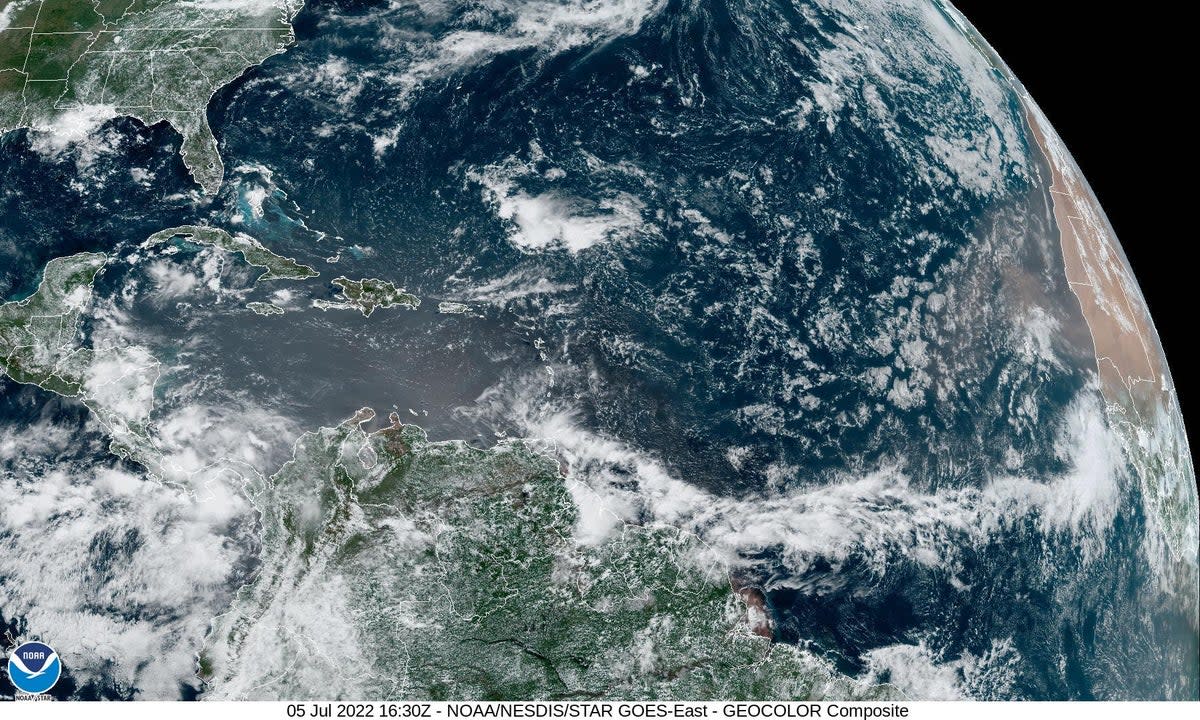NOAA tracking three tropical waves in the Atlantic

The National Hurricane Center (NHC) is currently tracking three “tropical waves” — bands of west-moving low pressure — in the Atlantic Ocean.
Two of the bands are in the Caribbean, while one is further out by Africa.
Tropical waves are wide stretches of low pressure over the ocean that move from east to west, and can occasionally form tropical cyclones, the National Oceanic and Atmospheric Administration (NOAA) says.
Areas of low pressure can also bring rain.
Currently, no new tropical cyclones are expected over the next five days, according to the NHC.
There have already been three named storms in the Atlantic this hurricane season, which officially began last month.
Tropical Alex formed from the remnants of Hurricane Agatha, which crossed over from the Pacific. Then, Tropical Storm Bonnie formed off the coast of Nicaragua and Costa Rica and has now become Hurricane Bonnie as it powers westward above the Pacific.
This past weekend, Tropical Storm Colin formed and hit the southern Atlantic Coast of the United States.
The agency has predicted an above-average hurricane season in the Atlantic, with up to 21 named storms between June and mid-autumn — in part due to continuing La Niña conditions, which can lead to more hurricane activity in the Atlantic. An average season has around 14 named storms.
They expect around six of them to reach Category 3 or higher, meaning wind speeds higher than 111 miles per hour (178 km/h). Currently, none of the three named storms have reached hurricane status (wind speeds higher than 74 mph/119 km/h) while in the Atlantic.
The climate crisis may not make hurricanes more frequent but will likely make them much stronger, Nasa says.
Stronger storms could bring both higher windspeeds and more intense rainfall, potentially being more damaging to coastal communities, partly due to warmer ocean waters and more moisture in the air — both caused by greenhouse-gas fuelled planetary heating.

